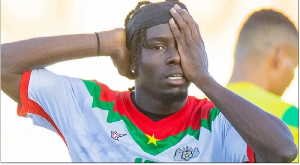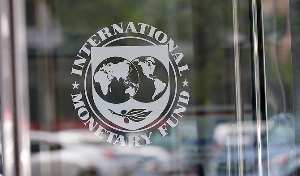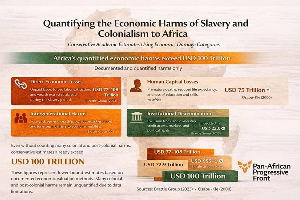14:40 GMT, August 2, 2012 The Ghana Navy July 31 took delivery of two ex-German Navy fast attack craft, GNS Yaa Asantewaa and GNS Naa Gbewaa, at its Sekondi Naval Base.
Rear Admiral Matthew Quashie, the Chief of Naval Staff who received the two vessels, said their crews spent 28 days sailing to France, Spain, Portugal, Senegal, Liberia and Ghana. The Flag Officer Commanding, Western Naval Command, Commodore Timothy Samuel Appiah, said the crew (including 14 officers and 56 ratings) had spent three months of intensive training in Germany before their expedition to Ghana, reports the Ghana News Agency.
The ships were handed over to the Navy during a ceremony held at Neue Tadewerft, Wilhelmshaven, Germany, early last month before sailing for their new home.
Quashi said that he was grateful the late president John Atta Mills had sourced the vessels for the Navy, which would use the vessels to check internal and external aggression. Ghana is paying attention to combating piracy and protecting its oil installations.
The GNS Yaa Asantewaa and GNS Naa Gbewaa are Type 143A Gepard fast attack craft. In July 2010 Ghana announced the acquisition of the two decommissioned vessels, which are 58 metres long and weigh 398 tonnes. They were refurbished prior to being handed over.
In a statement last month Lieutenant-Colonel E Aggrey-Quashie, Ghana Armed Forces Public Relations Directorate, said that the delivery of the fast attack craft brings the number of vessels acquired for the Ghana Navy to seven over the last three years.
On February 21 Mills commissioned four new patrol ships for combating piracy and increasing maritime security in Ghana’s territorial waters (Blika [P34], Garinga [P35], Chemle [P36] and Ehwor [P37]). They were built by China’s China’s Poly Technologies Incorporated.
Ghana needs to protect its maritime resources, police its waters and ensure security at sea from a variety of threats, including piracy, drug trafficking, arms smuggling, dumping of toxic waste, illegal bunkering, illegal fishing, and pair trawling.
On January 21 last year the Ghana Navy commissioned GNS Stephen Otu (P33), a refurbished Sea Dolphin-class (PKM) fast attack craft donated by South Korea.
In July last year Jane’s reported that Ghana’s Navy plans to acquire ten new vessels over the next two years and believes Ghana has ordered two 62 metre patrol craft from South Korea for delivery by July 2013. Ghana is also expanding its Naval Dockyard in the southwest of the country.
Ghana has been reviewing measures to safeguard its waters, most importantly to protect our oil installations from pirate attacks. Piracy in the Gulf of Guinea is not on the scale of that off Somalia, but analysts say an increase in scope and number of attacks in a region ill-equipped to counter the threat could affect shipping and investment.
Ghana’s Navy is relatively small, with 2 000 personnel, according to the IISS’s 2011 The Military Balance. It operates two 1940s-era Balsam class vessels previously operated by the US Coast Guard, four fast attack craft built by Lurssen (two PB 45 Dzata class and two PB 57 Achimota class vessels) and a single PB Mk III inshore patrol boat that was transferred from the US Navy in 2001.
In its efforts to secure its maritime domain, Ghana is in the process of setting up a vessel traffic management and information system (VTMIS) to provide electronic monitoring of its entire coast. This will include coastal radar stations with command and control centres. In February last year the Ghana Maritime Authority signed a contract with Eltel Networks of Finland to supply and install the VTMIS. The system is being funded by BNP Paribas. Ghana’s parliament last year approved a 17.6 million euro credit facility for the VTMIS with BNP Paribas.
General News of Thursday, 2 August 2012
Source: defenceWeb












